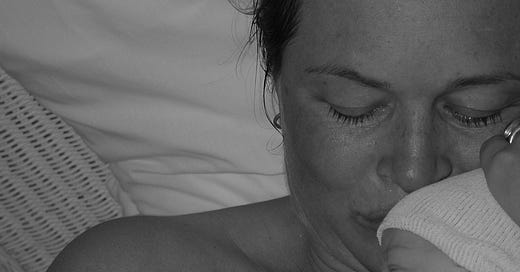When do you Breathe?
Breathing is one of those elements of raising children that can never be overstated. From the moment the baby draws its first breath there is drama – that first breath is usually followed by a lusty protest at the condition of being made to breathe – and the first night / week / month is all about listening for breath, checking for breath, clearing airways for air, and anticipating all the ways breathing could stop.
Anyone who has ever heard a baby cry knows the sound of the sharp intake of breath first. If, God forbid, your child is hurt, that gasp of pain right before the cry or scream is unmistakable and heartbreaking. The sound of breathing is as striking for its absence as for its presence, and the quick thinking of a dad when the baby’s quiet tearing of paper results in a blocked airway is a life or death decision – the kind that gives you nightmares of “what if?”
Learning to hold breath is an essential component in learning to swim, a skill without which childrens’ lives are considerably less safe. Any lack of air – the inside of an old refrigerator in my generation, a pillow over the face in a fight with a sibling – is potentially deadly, and fears of suffocation that began with the newborn only change with each passing year, they don’t go away.
Then, as children find their voices and become their personalities, “just breathe” is a mantra for parents. Breathe through temper tantrums and sibling fights. Breathe through unfulfilled expectations of being able to work from home, changed plans, unexpected illnesses, and every curve ball life can throw at a parent. Breathe through the frustrations, the heartaches, the physical and emotional pain parenting inflicts and you’ll wake up to do it again the next day.
Then children become teenagers, and fears about breathing begin all over again with the most basic survival – are they still breathing when they’re out of our sight, operating on a teenaged brain with its unfinished pre-frontal cortex? Are they making safe choices? Sane choices? Choices that let them breathe?
If you’ve ever watched your child have a panic attack, you feel their gasping breaths, their anxiety spikes, and the way they fight to breathe. You try to breathe for them, to match your breathing to theirs and force air into their lungs. You’d do anything to make their breaths come easier, to ease their fears, but breathing doesn’t work like that. We can model long, deep breaths, but we can’t take them for our kids. The air in our lungs won’t give them oxygen – they have to find their own.
As a parent, when does it get easier to breathe? When do we trust that our kids are still breathing deep, easy breaths? Now the suffocation dangers are from stress and life and hurt and fear, and we still can’t take their breaths. We can only hope that we’ve taught them to be mindful of breathing, their needs for air, and the peacefulness of easy breath.
We can’t breathe for them, so we have to just keep breathing ourselves. It’s the only way we’ll be there to clear an airway, or help them breathe through the things that take their breath away.




